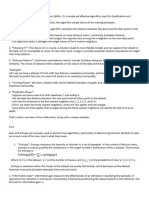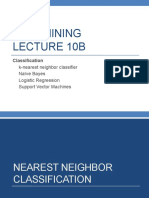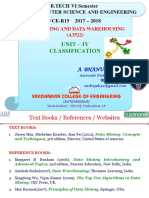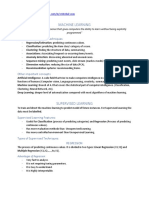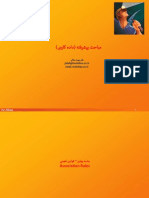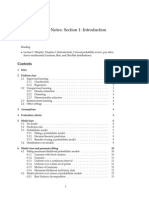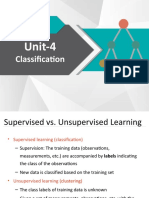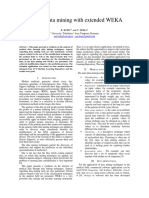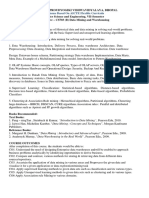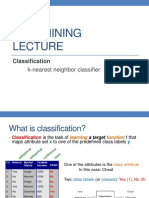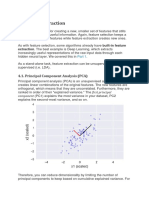0% found this document useful (0 votes)
120 views16 pagesCZ4032 Data Analytics & Mining Notes
This document discusses various techniques for classification and clustering in machine learning. It covers topics like overfitting and underfitting in decision trees, instance-based classifiers like k-nearest neighbors, Bayesian classifiers, support vector machines, artificial neural networks, and ensemble methods. It also discusses different types of clustering like partitional, hierarchical, density-based clustering and the k-means clustering algorithm.
Uploaded by
Feng ChengxuanCopyright
© © All Rights Reserved
We take content rights seriously. If you suspect this is your content, claim it here.
Available Formats
Download as DOCX, PDF, TXT or read online on Scribd
0% found this document useful (0 votes)
120 views16 pagesCZ4032 Data Analytics & Mining Notes
This document discusses various techniques for classification and clustering in machine learning. It covers topics like overfitting and underfitting in decision trees, instance-based classifiers like k-nearest neighbors, Bayesian classifiers, support vector machines, artificial neural networks, and ensemble methods. It also discusses different types of clustering like partitional, hierarchical, density-based clustering and the k-means clustering algorithm.
Uploaded by
Feng ChengxuanCopyright
© © All Rights Reserved
We take content rights seriously. If you suspect this is your content, claim it here.
Available Formats
Download as DOCX, PDF, TXT or read online on Scribd
/ 16









